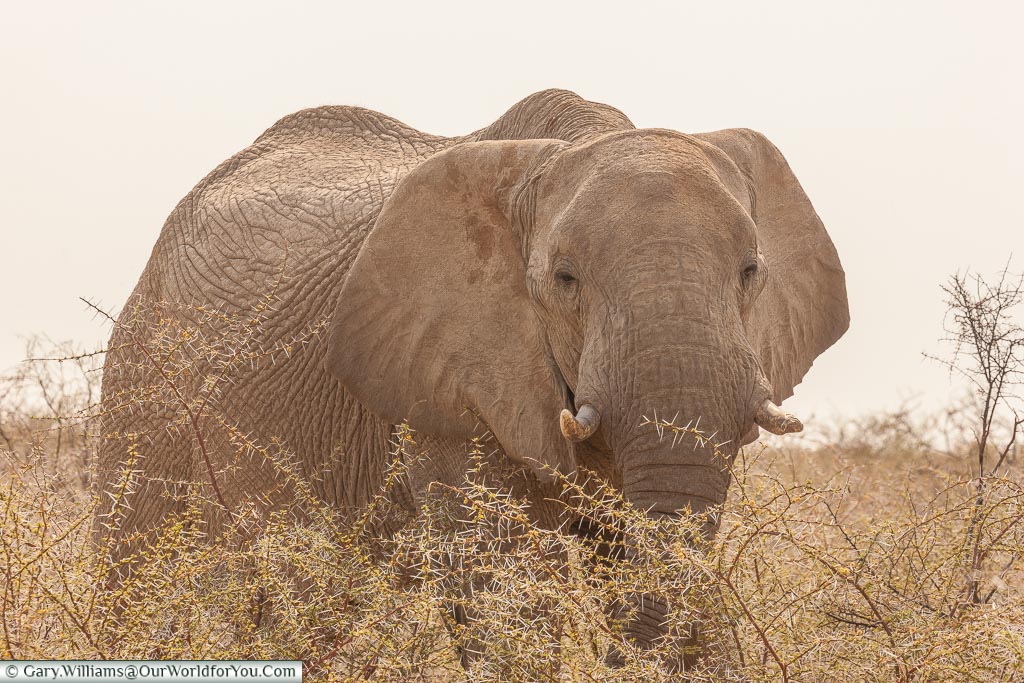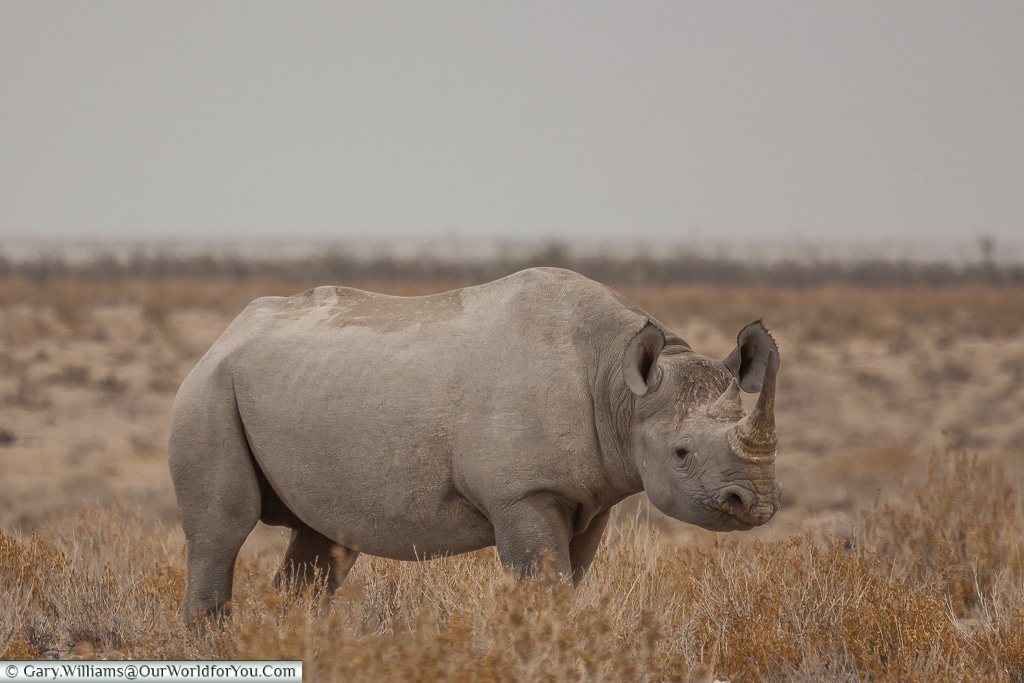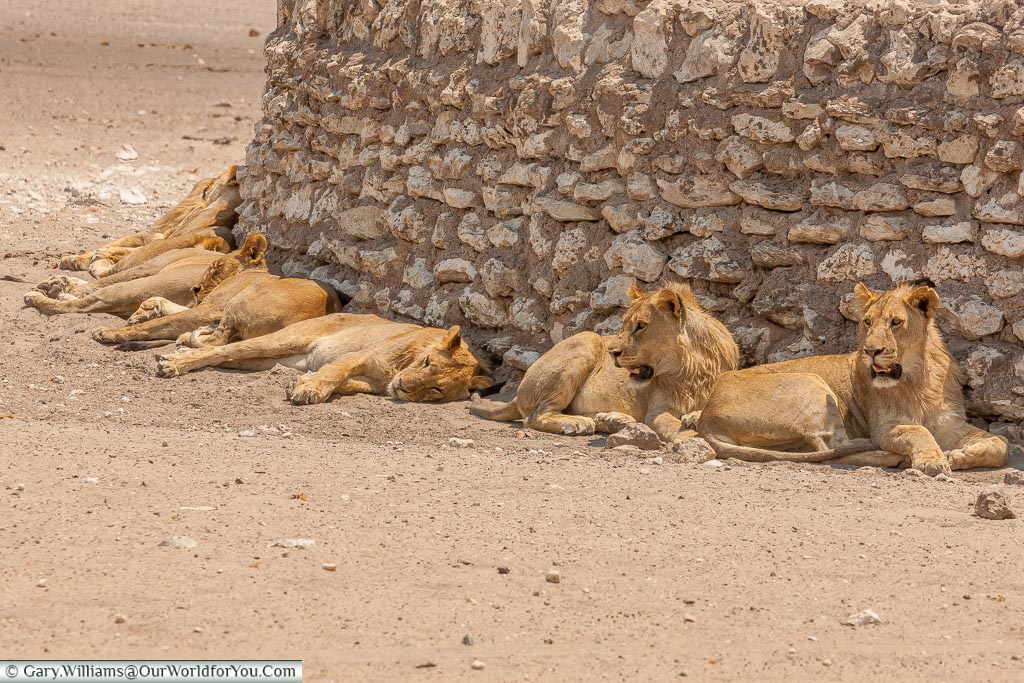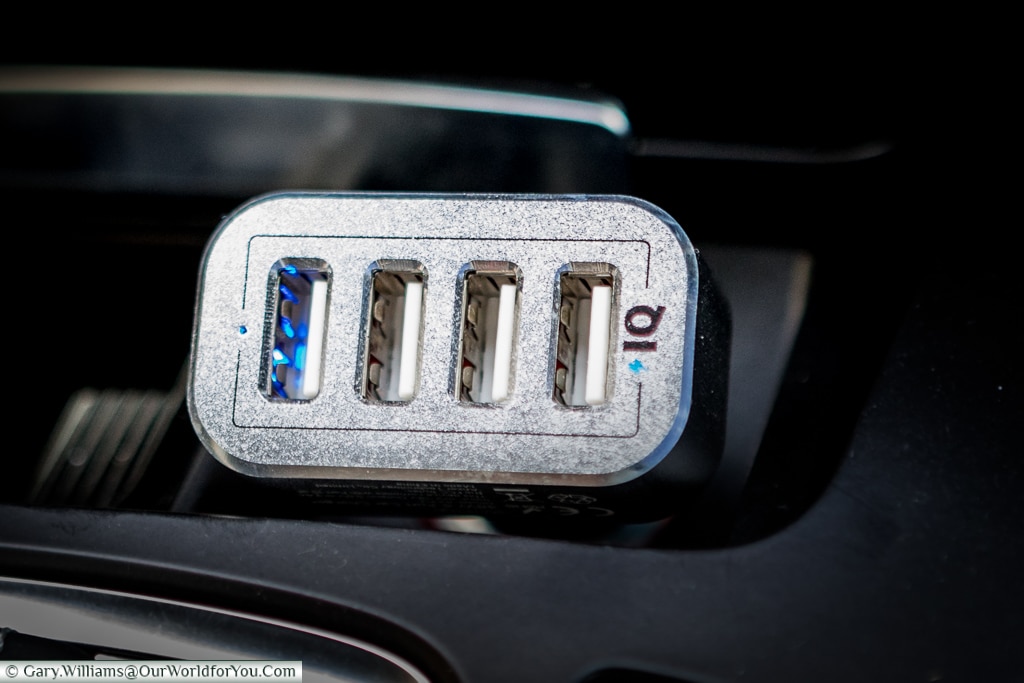
The Hilux Briefing
Tips for driving in Namibia

Heidi the Hilux at Fish River Canyon, Namibia
1) Fuel
Depending on your itinerary, you are going to go a day or so without seeing a filling station. So a long range fuel tank is a benefit.
The one fitted on our model was a basic integrated unit that sat above the normal tank. That meant you filled the truck as normal but the fuel gauge didn't move until the auxiliary tank was empty, and then worked as expected.
Our rule of thumb was to avoid running lower than 1/2 tank on the gauge and that served us well.
2) Tyres
As well as the 4 fitted tyres, you also have two spares in the back of the truck fitted to wheels, along with a third tyre. It's not unusual for a rock to slash a tyre and ruin it, so you need to be prepared to change a wheel, and get the spare fixed as soon as you can.
You are strongly advised when travelling on deep sand to reduce the tyre pressure on your truck to around 10-15PSI, as this increases the contract patch. We saw those who chose to ignore that advice and become stuck, fortunately the good natured guides helped them get out and rolling again.
There was also an on-board air compressor to allow you to re-inflate the tyres when back on tarmac, and you need to allow time for this because it's not a quick process. (allow 45 minutes to re-inflate all 4 tyres.)
3) Water
Always, always, carry spare water. Ideally a minimum of 2 litres per person.
It's nice to have a fridge in the truck, and ours came with some additional advice, manually turn it to its lowest setting when you leave the truck overnight, else you'll end up with a flat battery.
A helpful guide
If you're considering a road trip through Namibia, then your in for a holiday of a lifetime. I always find it incredibly useful to plan our trips with the help of a guide book.
Take a look at this informative Bradt guide, it will give you great tips and advice.
4) Ventilation flap
In the rear cover of the pickup on the Hilux was a small metal flap. When travelling over dusty terrain open the flap to increase ventilation.
We forgot this once or twice and some 3 years later we are still hoovering sand from our suitcases. Seems like it was an important point.
And that was it.
The other advice
The stuff we researched before we set off travelling, and also whilst talking to the guides whilst in Namibia.
1) Understand Elephants
They are big; no I know you already know that, but they also represent a threat. Whether it is a lone bull elephant, a small collections of males or a vast matriarchal herd, they share something in common - if you spook them, they will charge, and here's the bad news: a charging elephant can cover the ground at up to 45kph, you'll be lucky if you can control your 4x4 at that speed over uneven ground.

A big bull elephant, Etosha, Namibia
So avoid worrying them, always allow them a path to get away. If you see a large herd make sure you give it distance, especially if there are young ones.
2) Rhino's can break cars

A rhino - approach with caution, Etosha, Namibia
So avoid worrying them, always allow them a path to get away. If you see a large herd make sure you give it distance, especially if there are young ones.
3) If told to, stay in your vehicle
Again, I don't want to be a killjoy, but when you're told to stay inside - it's probably a good idea to.

A pride of resting lions, Etosha, Namibia
Now these folks didn't seem too interested in dining, but I didn't want to find out the hard way I was wrong.
4) Driving at night
Namibia is a relatively safe place, however it's generally a good idea to avoid driving at night. So plan to get to your destination in plenty of time in case you do encounter a delay.
I would say, if you get a chance to do a night safari with an experienced guide then do so. Wrap up warm and enjoy.
5) Keep a waste bag in the car
Simple really, somewhere to put your rubbish and keep Africa beautiful.
6) Consider a USB cigarette charger

7) Allow enough time
This varies with your individual itinerary, but a large portion of your route could be on unmade roads. The speed limits are lower, and you have an increased risk of punctures.

